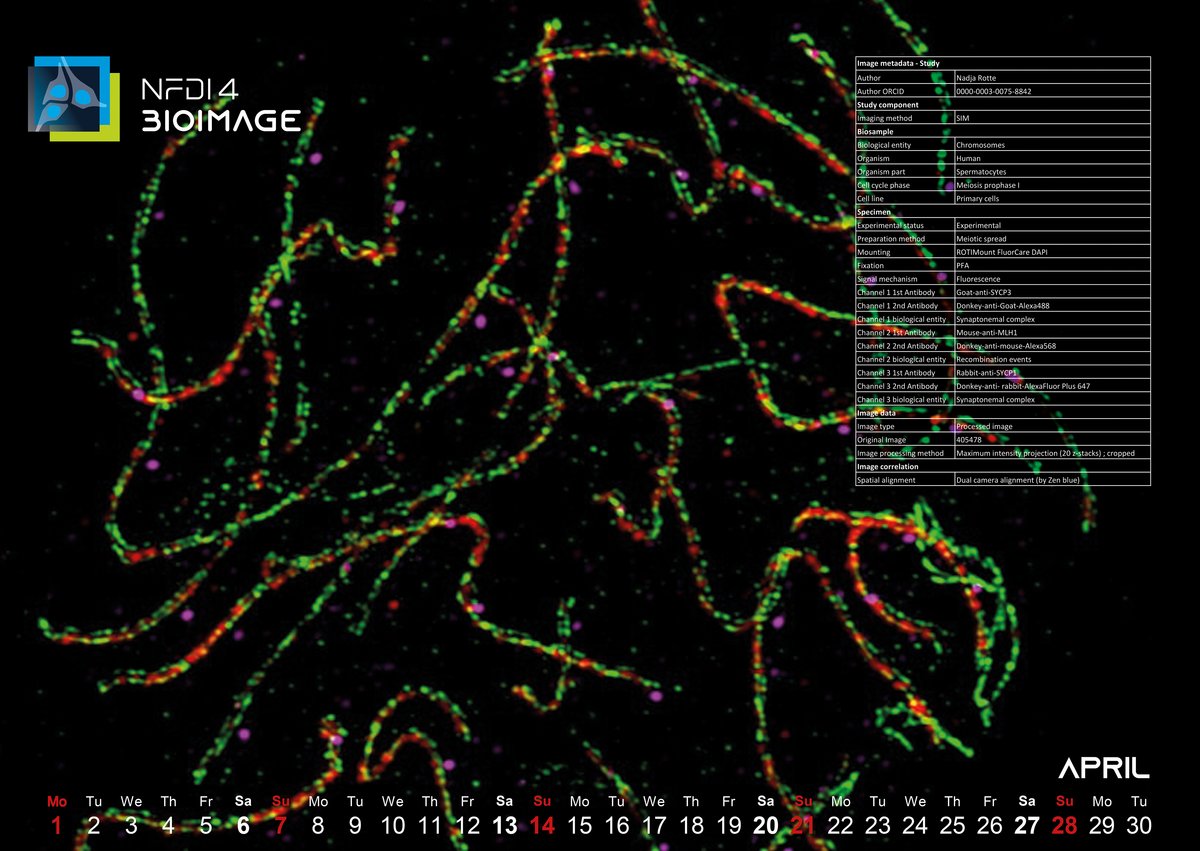
April 2024: A FAIRy tale of meiosis
The image of the month April was kindly contributed by Nadja Rotte who explored the genetics of male infertility as a PhD student in the group of Corinna Friedrich at the Institute of Reproductive Biology at Münster University. This spread of an entire set of condensed chromosomes of a single human spermatocytic cell in meiosis illustrates a perfect cellular analogy of the FAIR principles. Let’s explore how nature implements the principles of findability, accessibility, interoperability and reusability.
The nearly perfectly assembled homologous chromosome threads, made visible by the cell biological technique of chromosome spreading, seem rather unsorted at first glance. However, the high resolution of the image acquired by structured illumination microscopy (SIM) illustrates chromosome-associated proteins and highlights the enormous extent of organisation particularly between homologs. This makes chromosomal regions FINDABLE for researchers but also intracellular players. Despite largely silenced gene expression at this stage of meiosis, essential genes remain ACCESSIBLE for the transcription machinery. This interplay follows clear concepts with fine-tuned quality control mechanisms.
Functional units highlighted by fluorescence based on antibody staining of protein complexes essential for cohesion of chromosomes and recombination are INTEROPERABLE with each other. Genetic material is naturally REUSABLE for cellular progeny and during meiosis minor derivatives are intentionally generated.
Nadja and her colleagues implement FAIR principles by using OMERO at the Multiscale Imaging Centre (MIC). They discuss reseach results based on summaries of microscopy images created using OMERO.figure and can easily share their findings with the scientific community. “For us, OMERO is becoming a valuable tool for organising and visualising our microscopy data. Especially the option to directly link URLs to the web-based image viewer greatly improves the accessibility and impact of our research findings. We are excited to include this feature in our upcoming publication for the first time, adding a new level of interactivity and engagement to our work.”, comments Nadja.
Coherent implementation of the FAIR principles in everyday work routines in biological and medical research on reproduction and beyond is a key goal of consortia such as NFDI4BIOIMAGE. Increased reuse and analysis of bioimage data including Nadja’s work will help tackle the challenges of infertility which affects roughly 1 in 6 humans world-wide today.
We invite you to join the FAIR journey.
Conni Wetzker, data steward at NFDI4BIOIMAGE and the Center for Molecular Bioengineering at TU Dresden
